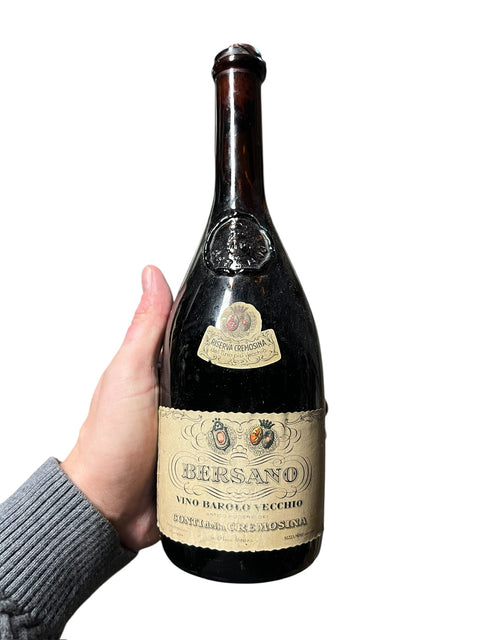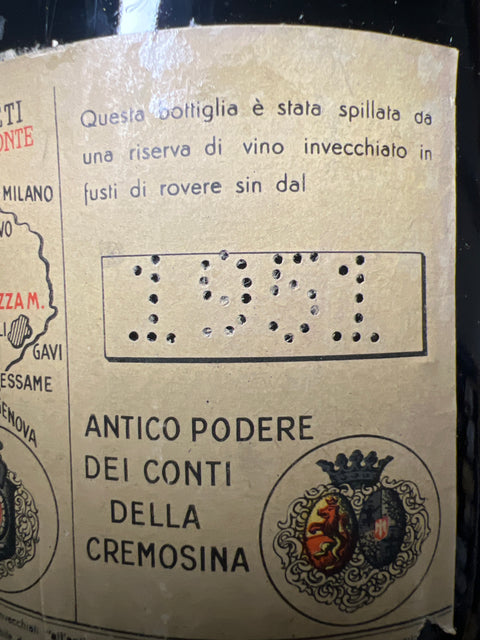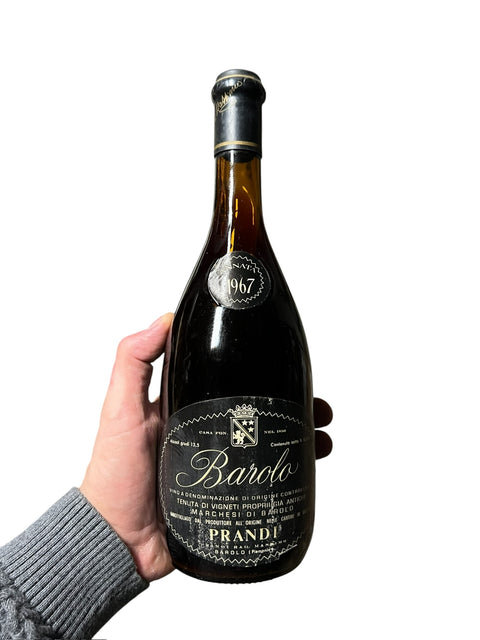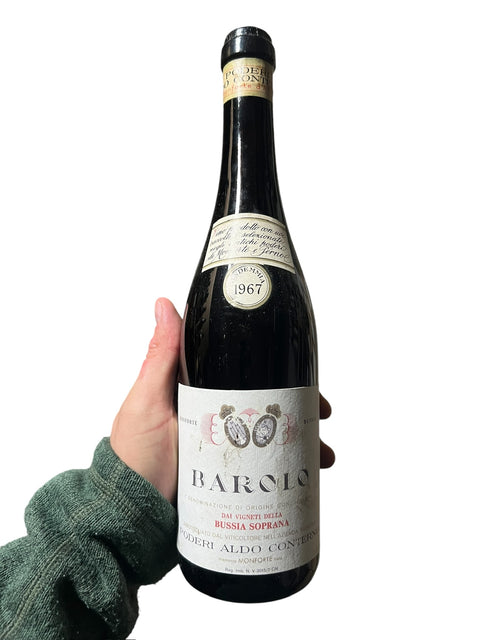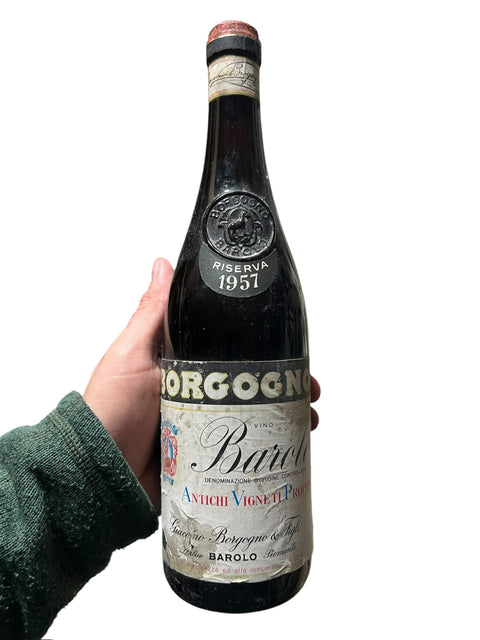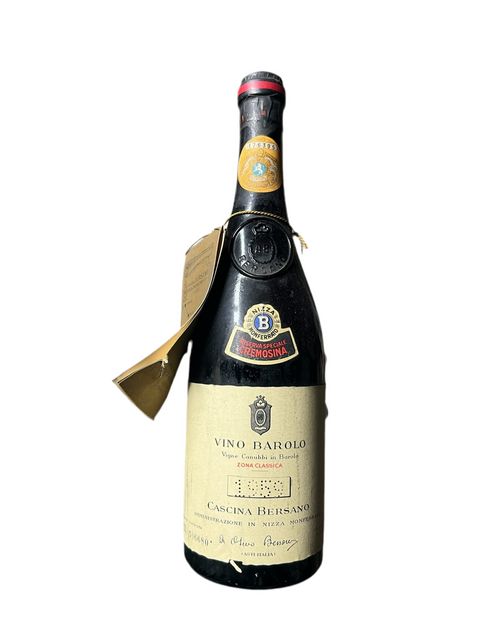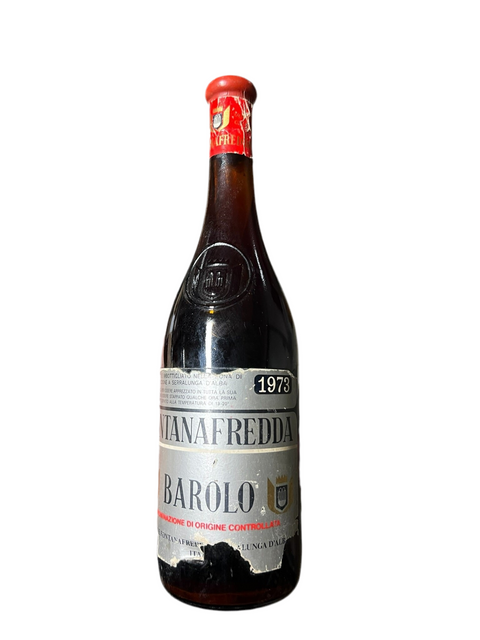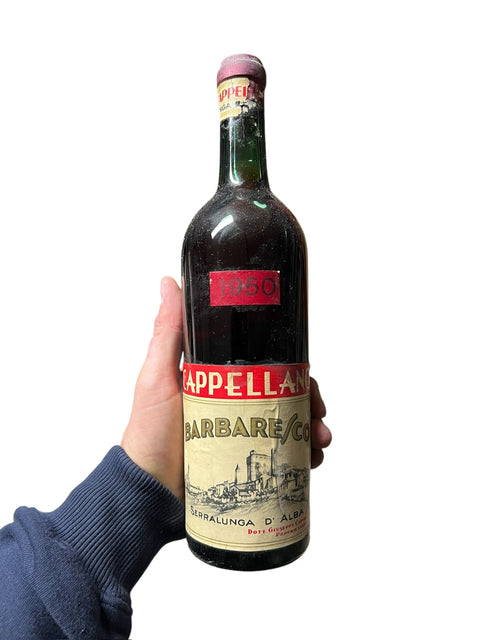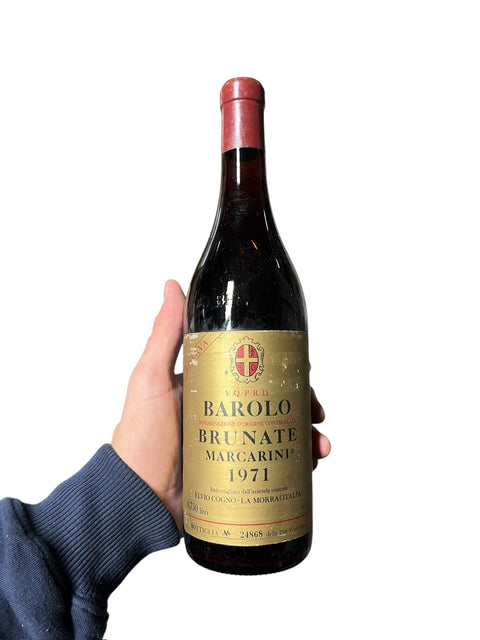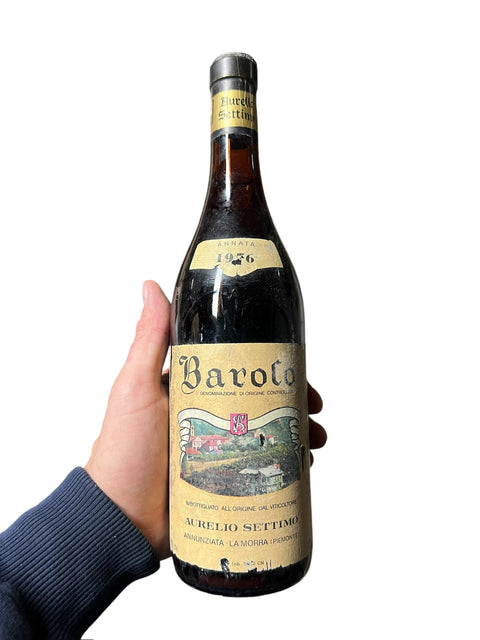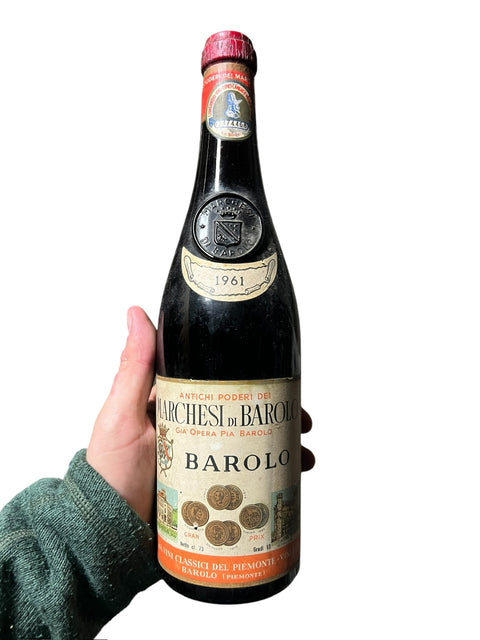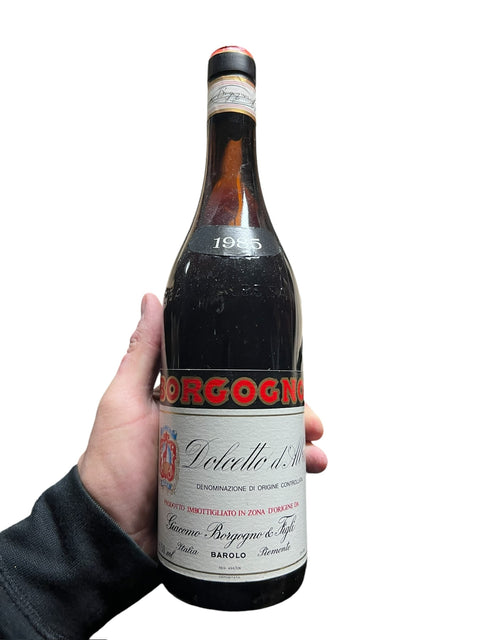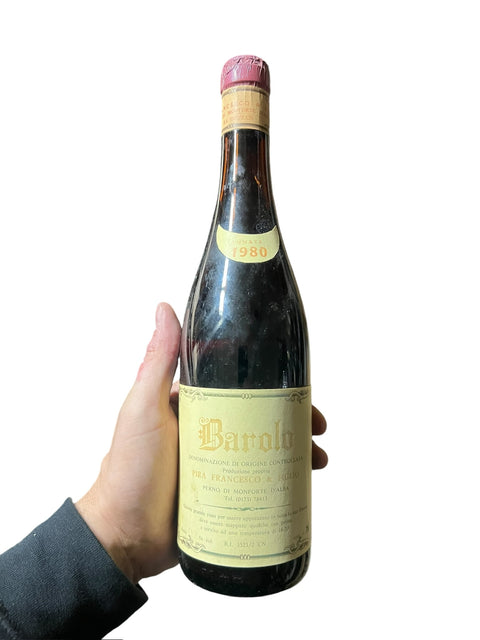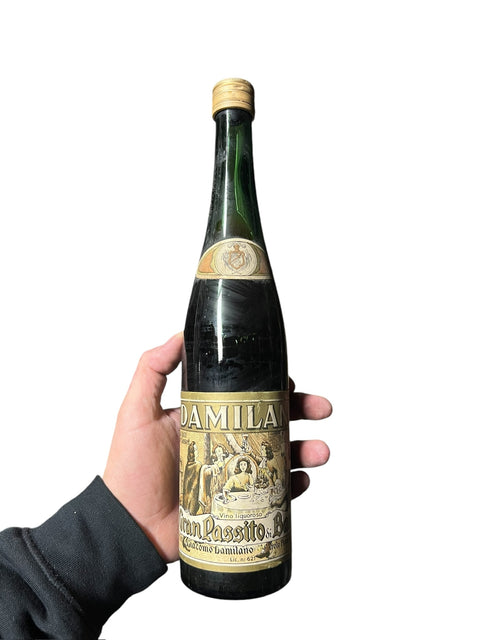218 products
Barolo is a red wine produced in the northern Italian wine region of Piedmont. Barolo is considered by many to be the wine of kings, and many would even call it both Italy's best wine and even the world's best wine. It doesn't get any bigger. As I said, the Barolo area is located in the Piedmont wine region in northwestern Italy.
Piedmont
The Piedmont region is surrounded by the Alps and Apennine mountain ranges, and the region borders both France and Switzerland. Only approx. 30% of the area is suitable for viticulture due to the large differences in height that characterize the area.
The climate is characterized by long and cool winters, while the summers are bright, dry and hot, which is reflected in the expression of the wines. Barolo is the great pride of the region, and in this town the vineyards lie side by side on steep slopes.
Which grape is Barolo made from?
Barolo wine is made from 100% Nebbiolo, just like its little brother wine Barbaresco is. The Nebbiolo grape is named after the Italian word nebbia, which means fog. The reason for this is that the vineyards in Piedmont, where the nebbiolo grape has its home, are often surrounded by an intense fog. Nebbiolo is one of the most tannin-rich red wine grapes, and this is one of the many characteristics of the king of wine, Barolo.
The two Barolo schools
In Barolo, two schools of wine are used, which can roughly be divided into the new and the old, or the modernists versus the traditionalists.
The new school
The modernists of the newer school make Barolo wines that have a softer tannic acid that is more balanced and can be drunk earlier. The modernists have a different approach to production than the traditionalists. They can think of storing their Barolo wines in new wooden barrels, which for traditionalists is completely unthinkable.
The old school
It is no surprise that the traditionalists do not think that the modernist way of making Barolo wine should be called Barolo. They are in favor of a long storage time in old oak casks, and according to them this should not be changed. Barolo wine is a huge brand all over the world, and the interest in Barolo red wine is so great that there is probably room for both schools.
The municipalities of Barolo
There are 11 municipalities in Barolo, one of which is Barolo. Out of the 11 municipalities, there are 5 municipalities that are particularly interesting. These 5 are described below here, where you can get an idea of the differences and characteristics of each one of them.
La Morra
The municipality of La Morra is located in the northwestern part of Barolo, and it is in this municipality that a full 30% of DOCG (denominazione di origine controllata) Barolos originate. Many of the wines from the Barolo area here have therefore received the classification DOCG (denominazione di origine controllata). Barolo wines from this municipality are considered to be the lightest among the 5 main municipalities, and it is therefore more feminine and elegant Barolo that you find here.
The wines can be drunk relatively early and have tones of strawberry, forest floor, mushrooms, mint and tobacco.
The most important individual fields in the municipality of La Morra are Fossati, Gattera, Arborina, Brunate, Capalot, Case Nere, Conca, Giachini, La Serra, Manzoni, Cerequio, Rocche dell Annunziata and Roggeri.
Barolo
The municipality of Barolo is the center of DOCG Barolo historically, and it is from this municipality that the first Barolo wines were produced. Although the historical background suggests that the municipality makes some of the best Barolo wine, this is not the case. Wines from this municipality are not as elegant as those from the Municipality of La Morra, but they instead have more body and a better structure.
The most important fields are Cannubi, Bricco Viole, Cannubi Boschis, Cannubi Monghisolfo, Cannubi San Lorenzo, Brunate, La Volta, Costa de Rose, Castellero, La Villa, Le Coste and Sarmassa, where Sarmassa and Cannubi in particular are known for high quality.
Castiglione Falletto
The municipality of Castiglione Falletto is located a little east of La Morra, and it is from this municipality that some of the most structured and powerful Barolo wines are made. The wines from here require a long time to mature, but they are nevertheless both elegant and extremely complex.
Most Barolo wine from the municipality here is characterized by notes of cherries, mint, plums and you can even come across notes of licorice and tar.
The most important fields are Montanello, Bric' del Fiasc, Rocche, Codana, Monprivato, Pernannon, Rivera, Bricco Boshis and Villero.
Monforte d'Alba
The municipality here is named after the Italian word 'mons fortis' which means 'the strong mountain'. This Barolo town is precisely located on a mountain with a great view over the rest of Barolo. The municipality is the southernmost of the 5 main municipalities, and the wine from here is at the stronger and darker end of the scale.
The wine often has dark notes of gunpowder, tar and violets. The wines mature late, and therefore require a number of years before you get the optimal taste experience.
The most important fields are Gramolere, Arnulfo, Bussia Sottana, San Giovanni, Bussia, Ginestra, Bussia Soprana, La Villa, Gaverini, Le Coste, Mosconi, Munie, Pianpolvere, Dardu and Santo Stefano de Perno.
Serralunga d'Alba
The municipality of Serralunga d'Alba is located in the south-eastern part of Barolo, and it is here that you will find some of the longest-lasting Barolo wines. The climate here is cooler than in the other municipalities, which contributes to a slower ripening of the grapes.
The tannins in the wine are often more refined and the wines tend to have notes of red berries, chocolate, coffee and truffle.
The main vineyards are Falletti, Lazzairasco, Borgogno, Prapo, Rocche di Costamagna, Franco Martinetti and Bric del Feugo
Now that we have looked at the 5 most important municipalities in Barolo, let's take a closer look at the wines themselves.
What is Barolo wine?
Barolo wines are some of the longest-lasting red wines in the world, and many of them can age for decades. The wines are made from the Nebbiolo grape, which is native to the Piedmont region of Italy. The grape is known for its high acid and tannin content as well as its many different aromas and taste nuances.
The color of Barolo wine can vary from light ruby red to garnet red, and the wine is often described as "transparent". The wine's aromas and flavors are extremely complex and can include floral elements as well as darker notes of spices, black fruits and truffles.
Barolo producers
As in all other wine regions in the world, one of the most important factors in creating a good wine is that the producer has great expertise in the whole process. Barolo is characterized by having a generally high level in the wines that are sent to the market. The reason for this is, among other things, the many skilled producers who characterize the area. Good Barolo requires a skilled producer. Below here we will briefly review some of the most prominent and best reviewed producers in Barolo.
Giacomo Conterno
Giacomo Conterno is one of the most prominent wine houses in Barolo, and his wines are some of the most collectable and long lasting in the world. The winery was founded in 1908 by Giovanni Conterno and is now run by his grandson Giacomo.
The Conterno family has always been dedicated to making Nebbiolo wines of the highest quality, and they were one of the first producers in the region to start using barriques (smaller oak barrels) to age their wines.
Giacomo Conterno's wines are known for their beautiful aromas, elegance and amazing ability to age for decades. If you are lucky enough to find a bottle of one of his older wines, it will be an experience you will never forget.
Robert Parker and many of the other world-famous reviewers praise Barolo red wine from Giacomo Conterno.
Marchesi di Barolo
Marchesi di Barolo is one of the oldest wineries in the region and was founded way back in 1746 by Clemente Giacomo Ascheri. The winery is now run by his great-great-grandson Giovanni Sottimano, who has carried on the family tradition of making high-quality Nebbiolo wines.
The Marchesi di Barolo wines are some of the most classic examples of Barolo, and they are known for their elegant aromas and nuances of taste, as well as their beautiful ability to age with grace.
Some of the most famous vineyards owned by the Marchesi di Barolo include Bussia, Cannubi and Brunate.
Angelo Gaja
Angelo Gaja is one of the most famous and recognized winemakers in the world, and his wines are some of the most sought after and expensive in all of Italy. Gaja is known for his pioneering work in the Barolo region, e.g.e.g by planting vines in new locations and by using different techniques in the cellar.
Angelo Gaja's wines are some of the most powerful and intense examples of Barolo with beautiful aromas and flavors of black fruits, spices and truffles. They are also known for their extremely high quality and are highly sought after by collectors worldwide.
Some of Angelo Gaja's most famous vineyards include Cannubi, Costa Russi and Sperss.
Storage of Barolo
Barolo is for many a dry wine with hard tannins that can often be characterized by intensive fruit acidity. One of the most important and interesting characteristics of the kings' wine is its unique ability to store for many years. In fact, some of the best Barolos can actually be drunk up to 80 years after the vintage in which the wine was produced.
Barolo aged for many years changes character, becoming less fruity, but even deeper and more intense. The wine also loses some of its distinctive tannic acid. The color of old Barolo can often be confused with Burgundy, where the bright almost transparent color characterizes the wine.
Barolo and food
Barolo is a very food-friendly wine and can be enjoyed with many different types of dishes. The most classic combination is with heavy dishes with red meat, but the wine can also be enjoyed with, for example, rich pasta dishes with truffle. Barolo wine is often characterized by its special soil conditions, which give a great diversity in taste.
If you are lucky enough to have a bottle of aged Barolo, it will go really well with aged cheese or chocolate desserts.
Food goes really well with Barolo, because the wine's special characters stand out even more in combination with food.
When you are going to enjoy your Barolo, it is a good idea to open the wine well in advance, so that the wine can open up before drinking. When it is time to enjoy the wine, it must be poured into large wine glasses, so that it has the opportunity to release different aromas, which make the taste experience completely unique.
The gift for the man who has everything
If you are looking for the gift for the man who has everything, look no further than a bottle of high quality Barolo. Barolo red wine is a wine that is sure to impress and please even the most discerning palate and is the perfect gift for any occasion.
Barolo is a popular red wine that is completely unique, and its many years of aging potential make it a wine that can be enjoyed now or stored for many years to come. If you are lucky enough to find a bottle of old Barolo, it will be an experience you will never forget. At Bottles with History, we have a large selection of Barolo in every imaginable vintage









